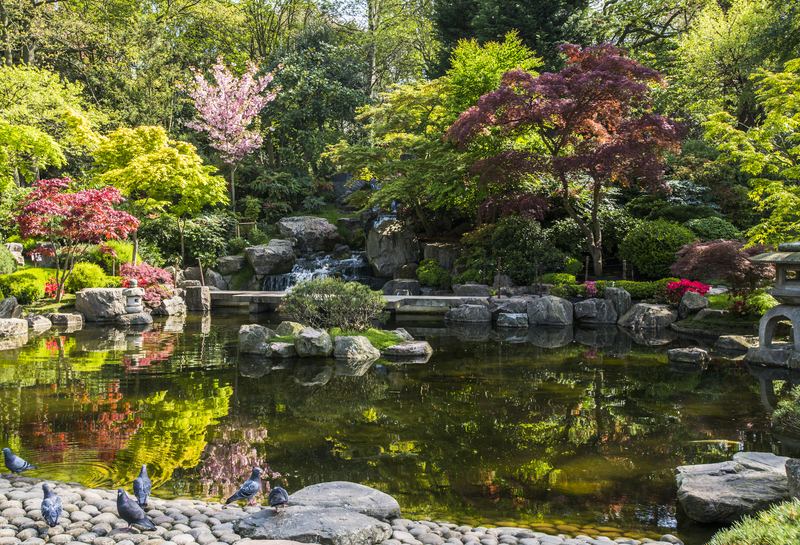How to Preserve Your Garden's Beauty in Winter
Posted on 26/06/2025
How to Preserve Your Garden's Beauty in Winter: The Definitive Guide
When winter's chill sets in, keeping your garden looking beautiful can seem like an impossible task. But a winter garden doesn't have to be dull or bare. With the right techniques, you can maintain your garden's charm all season long. In this comprehensive guide, you'll find expert tips and ideas on how to preserve your garden's beauty in winter--from winterizing plants to adding vibrant elements and structural interest. Read on to discover everything you need to create a garden that thrives, no matter how low the temperature dips.
Understanding Your Garden's Winter Needs
Each garden is unique, with its own set of needs during the colder months. Recognizing what your space requires is the first step to preserving its winter beauty. Winter brings shorter days, lower light, freezing temperatures, and often more moisture. These factors affect everything from plant health to your garden's appearance.
Assessing Your Garden's Plant Types and Layout
- Evergreens retain their leaves and add texture and color all year.
- Deciduous shrubs and trees reveal beautiful silhouettes when leaves drop.
- Perennials and bulbs need protective measures to survive the cold.
- Annuals may need to be replaced or covered if you want winter color.
By understanding your garden's plant composition, you can tailor your winter care accordingly.

Preparing Your Garden for Winter
Preparation is key when it comes to preserving garden beauty in the offseason. Here's a step-by-step guide to ready your space for the winter months:
1. Clean Up and Prune Wisely
- Remove dead or diseased plant material to prevent pests and disease spread.
- Prune deciduous trees and shrubs after leaves fall, but avoid heavy pruning just before a hard freeze.
- Leave some spent flower heads for winter interest and to feed birds.
2. Mulch for Protection
Mulching helps insulate plant roots, retain soil moisture, and reduce temperature fluctuations. Use organic mulch like shredded bark, straw, or compost. Apply a generous layer (2-4 inches) around the base of plants, especially perennials, bulbs, and young trees.
3. Care for Lawn and Soil
- Rake fallen leaves to prevent mold and suffocation in the lawn.
- Fertilize in late fall to help support healthy roots over winter.
- Aerate compacted soil to allow air and water to reach roots.
4. Protect Vulnerable Plants
Some plants need extra care to survive cold weather. Use burlap or frost cloths to wrap sensitive shrubs or tie up evergreens to prevent snow breakage. Container plants can be moved to sheltered spots or indoors.
Adding Winter Interest: Color, Texture, and Structure
One of the secrets to keeping your garden beautiful in winter is to focus on elements that shine even in the absence of blooms. Here's how you can create a stunning winter landscape:
1. Choose Plants With Winter Beauty
- Evergreens: Boxwood, holly, pine, and spruce provide color year-round.
- Berries: Plants like winterberry holly and viburnums keep bright fruits through winter.
- Bark: Dogwoods and birches showcase striking stems and bark in winter light.
- Grasses: Ornamental grasses add movement and a golden glow to winter gardens.
2. Embrace Hardscaping and Garden Structures
- Add arbors, pergolas, or trellises for visual interest.
- Install garden art, bird baths, or benches. These elements are particularly striking against a snowy backdrop.
- Paths and edging stand out in the starkness of winter, drawing the eye and defining space.
3. Use Containers for Seasonal Displays
Fill containers with cold-hardy plants like dwarf evergreens, hellebores, or pansies. Add branches, pine cones, or winter decorations for a festive look. Move containers to sheltered areas to avoid freeze damage to roots.
Watering and Managing Moisture in Winter
Proper hydration is essential even during colder months. While plants use less water during winter, dehydration can still occur, especially in cold but dry or windy conditions. Here's how to manage moisture effectively:
- Water evergreens and newly planted trees before the ground freezes to help roots store moisture.
- Check soil around plants during dry spells and water if necessary.
- Provide adequate drainage to avoid root rot, especially for container plants.
Protecting Wildlife and Beneficial Insects
A winter garden can support birds, pollinators, and other wildlife with just a bit of planning. This not only benefits the ecosystem but also adds life and action to your winter landscape:
- Leave seed heads on some perennials for birds to feed on all winter.
- Install bird feeders and keep them stocked throughout the season.
- Create shelters using brush piles or log stacks for beneficial insects and small mammals.
- Add a heated bird bath to support birds when water is scarce.
Winter Maintenance: Keeping Your Garden Tidy and Safe
Regular care during the coldest months ensures your garden remains attractive and safe:
- Brush snow off shrubs and small trees to prevent damage from heavy accumulation.
- Keep paths clear of ice for safety and accessibility.
- Monitor for winter pests like voles or rabbits, and use barrier methods if needed.
- Continue to enjoy and adjust garden decorations to maintain visual interest.
Planting for Next Winter: Long-Term Strategies
Now is a great time to plan for future winters in your garden. Think about adding more evergreen plants, winter-blooming flowers, or interesting hardscaping. Here are some ideas for a future-proof winter-friendly garden:
1. Planting Evergreens and Winter Interest perennials
- Consider boxwood, holly, fir, and juniper for year-round color.
- Try hellebores, witch hazel, or snowdrops for early blooms.
- Add grasses like miscanthus or feather reed grass for dynamic forms and winter texture.
2. Maximizing Seasonal Structure
- Select shrubs and small trees with unique winter forms or bark.
- Arrange garden beds so focal points remain attractive after leaves drop.
- Include garden sculptures or features that draw the eye in winter.

Frequently Asked Questions About Winter Garden Care
How do I stop my plants from dying in winter?
Protect roots with mulch, shield sensitive plants with covers, water before deep freezes, and select winter-hardy species for best results.
How should I care for my garden containers in winter?
Move them to sheltered spots, use frost-proof pots, and mulch the soil. Consider wrapping containers or raising them off the ground to prevent breakage from freeze-thaw cycles.
Can I still add color to my garden in winter?
Absolutely! Use evergreens, ornamental berries, colorful branches, grasses, and winter-flowering plants. Seasonal decorations and containers can also add vibrancy.
What is the best mulch to use in winter?
Organic mulches such as shredded bark, straw, or compost are ideal for insulation and soil health. Avoid piling mulch directly against plant stems to prevent rot.
Conclusion: Celebrate the Beauty of Your Winter Garden
Your winter garden can be just as enchanting as any other season with careful planning and maintenance. By understanding plant needs, protecting vulnerable areas, and adding creative touches, you'll ensure your outdoor space brings joy all year long.
Don't let winter's frost steal your garden's allure--use these tips to preserve and even enhance its beauty through the coldest months!
Key Takeaways for Preserving Your Garden's Winter Beauty:
- Prune, clean, and prepare in late autumn for best winter results.
- Utilize mulching and protective covers to shield roots and sensitive plants.
- Focus on evergreen structures, berries, and decorative features for year-round appeal.
- Maintain regular checks and clean up snowfall as needed.
- Plan for next winter with new plantings and landscape designs.
With these strategies, your garden will stand out as a haven of wintertime beauty--offering delight, relaxation, and even a splash of color until spring returns.


